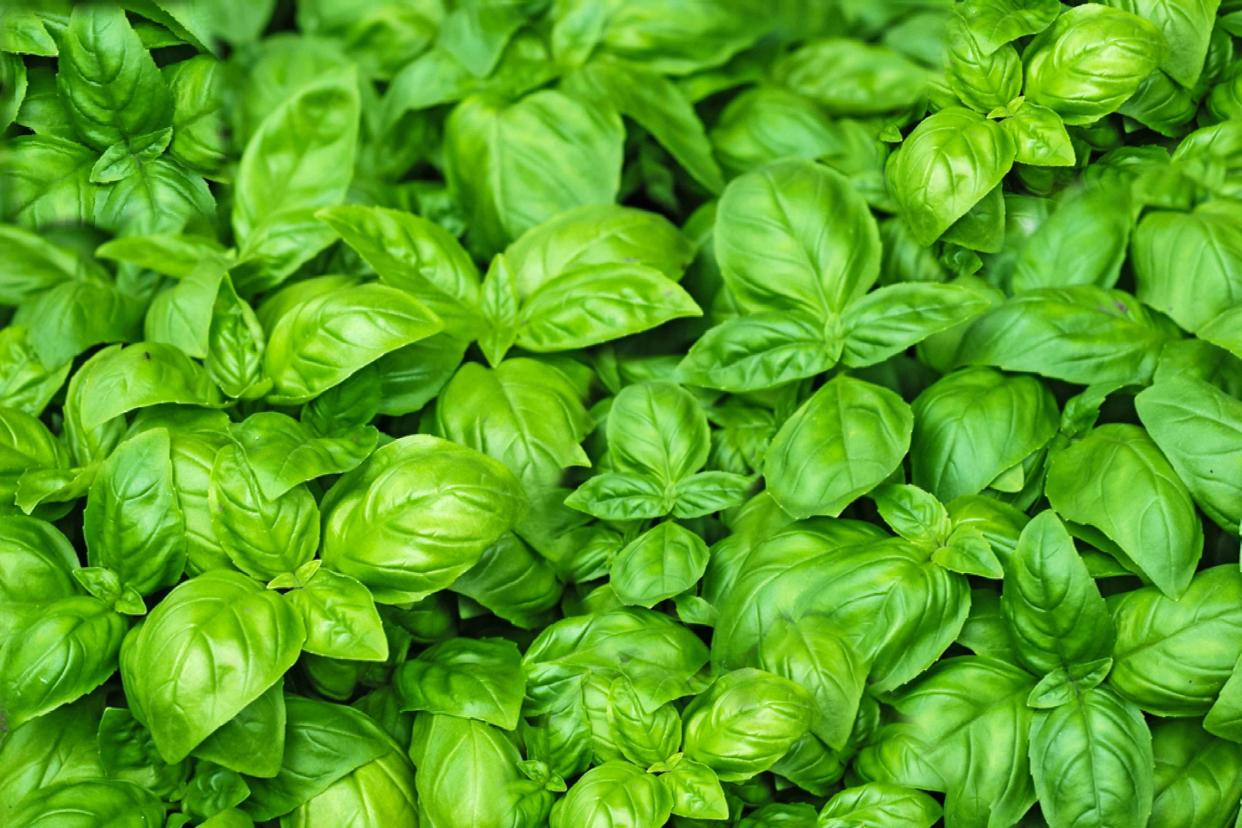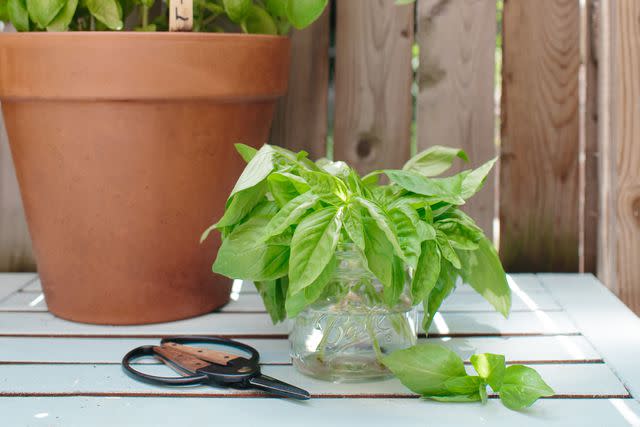Does Basil Come Back Every Year? What to Know About This Garden Staple

The Spruce / K. Dave
Basil is a beloved herb and an essential ingredient in every season. But is it possible to keep this plant as a perennial and enjoy its tasty leaves year after year?
If you live in USDA hardiness zones 10 and 11, you could count on sweet basil as a perennial herb. For the rest of the country, it is considered an annual and will not come back the next year. However, with some planning, you can have fresh sweet basil at hand, whether you grow it indoors or ensure it reseeds in your garden.
Ahead, learn more about growing basil year-round.
Is Basil a Perennial?
Sweet basil (Ocimum basiiicum L.), is not a perennial except in USDA hardiness zones 10 and 11. The same facts apply to other types of basil like Thai basil and spicy cinnamon basil.
Fun Fact
Wild basil, a distant relative of sweet basil, is a perennial in Zones 4-9. Although it has a milder flavor with hints of cilantro, it can be used like sweet basil in recipes.
Want more gardening tips? Sign up for our free gardening newsletter for our best-growing tips, troubleshooting hacks, and more!
How to Make the Most of Your Basil Harvest
If you want to keep fresh basil on hand year-round, follow these tips to make the most of your basil harvest.
Grow basil indoors. If you live in a cool climate, keep basil available by growing it indoors in pots year-round.
Protect the basil plants. To extend an outdoor growing season, protect the plants from late or early frosts by using row covers or individual plant protectors. A glass jar or plastic milk container will protect the plants at night but should be removed the next morning.
Stagger plantings. If growing basil from seed, stagger the sowing dates so the seeds germinate at least two weeks apart. If using nursery seedlings, purchase and plant about two weeks apart to extend the season.
Remove basil flowers. If flowers form on the basil stems, pinch them off immediately. The energy of the plant should go into producing more and larger leaves, not flowers that become seeds.
Harvest frequently. Regular removal of basil leaves will encourage the plant to branch out and sprout more leaves throughout the season.
Freeze extra leaves. To freeze fresh basil leaves, blanch them in boiling water for 30 seconds, pat them dry, and freeze flat on a parchment-lined baking sheet. Store the frozen leaves in airtight containers in the freezer.
Dry extra leaves. Use a dehydrator, oven, or microwave to dry basil leaves quickly. Once dry, crumble the leaves and store them in airtight containers.
How to Grow Basil Year-Round

The Spruce / Candace Madonna
Unless you live in USDA hardiness zones 10 or 11, you will need to either grow basil indoors or do a combination of outdoor gardening and indoor containers.
For outdoor plants, plant seedlings in the ground or containers in the spring once the last chance of frost has passed. You can get a head start on harvesting by starting seeds or seedlings indoors while the weather is still cool.
To grow indoors, you can start with seed, seedlings, or stem cuttings. Most indoor basil plants produce for about one year if maintained properly. Indoor basil containers need regular watering and plenty of bright light to thrive. A grow light is a great way to keep basil healthy if you don't have a sunny window.
How to Grow Basil as a Perennial
Annual basil plants in the garden will often self-sow if you don’t pinch back their flowers. You may be lucky enough to find some new seedlings in the garden in the spring if the weather cooperates. However, not all seeds germinate and the new seedlings will also be annuals. So, you can replant or move to a warmer climate if you'd like to be sure basil continues to come back every year.
If you are living in a semi-tropical area, basil seeds can be planted in early spring or fall in moist but well-drained soil. The plants are sensitive to frost and the leaves of many varieties will turn black and drop off the plant when temperatures drop below 40°F.
To save seeds from basil, leave the flowers on the plant until they die, allowing the seeds to turn brown and dry. Separate the seed from the seed capsules and store them in a cool place in a well-sealed container to replenish your crop.
Frequently Asked Questions
Can you keep basil alive in winter?
The best way to keep basil alive in winter is to grow it indoors in a container. It must have 6-8 hours of bright light each day from a sunny window or grow light. Most basil plants will produce well for approximately one year.
What zone is basil a perennial in?
Basil is usually considered a perennial in USDA Hardiness Zones 10 and 11. These are semi-tropical areas.
How often should you water basil?
Basil plants thrive in moist soil and deep watering at least weekly will allow the water to penetrate at least two inches of soil in the garden or container. The frequency of watering depends on the temperature and humidity so check the soil often.
Read the original article on The Spruce.

